With summer right around the corner, now is a great time for me to take a step back from the easel and share with you images of seven new paintings, which I produced this spring.
Most of the following paintings are already on view in my online portfolio — the Paintings section of this site — which now stands at 220 paintings.
Everything Is a Landscape (Or Not) is my newest painting. (In fact, it was completed today!) The title refers to a statement that Richard Diebenkorn made about his own paintings: “It was impossible to imagine doing a picture without it being a landscape,” he observed, “to try to make a painting space, a pure painting space, but [the picture would] always end up with a figure against a ground.” (Brackets mine.)
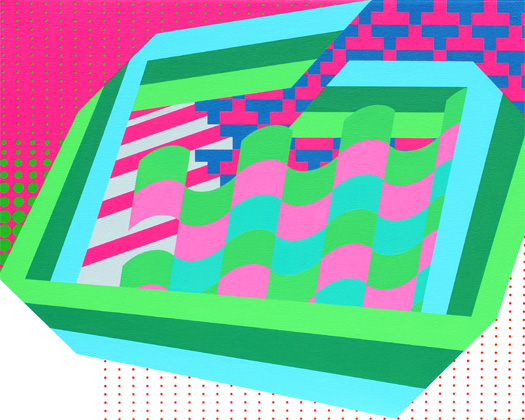
Everything Is a Landscape (Or Not). May 2014. Acrylic on canvas. 24 x 30 inches (61 x 76 cm).
I can see exactly what Diebenkorn meant. Quite often, I will take a step back from one of my own sketches and see a landscape “into” it. No matter how hard I try, I just can’t avoid this perceptual phenomenon. However, in contrast with Diebenkorn, my approach to abstraction is informed by our highly graphic, design-oriented culture — notably product packaging. Therefore, the “landscape” I arrive at is a reflection of the landscape I live in — one that’s bestrewn with eye-catching graphic motifs.
A companion piece to this painting is already in the works. I’m considering calling it Pure Painting Space.
Looking Forward to Now was painted in mid-May, but was first sketched two months prior, with a rather sedate blue-and-brown colorway. As I embarked upon making this painting, I felt a need to crank up the colors.
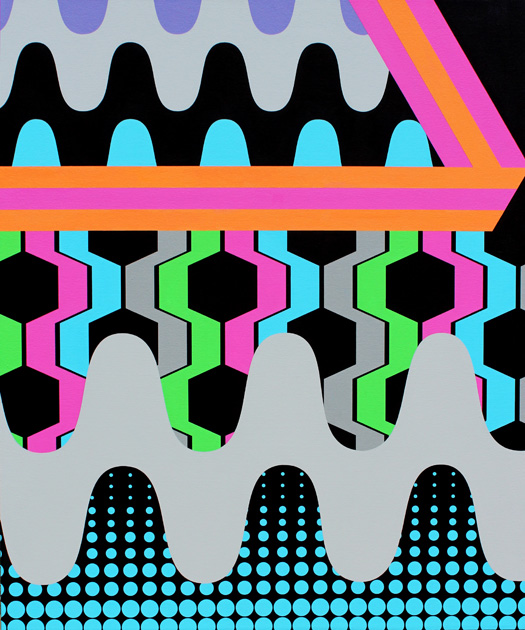
Looking Forward to Now. May 2014. Acrylic on canvas. 36 x 30 inches (91 x 76 cm).
The Lake A Lilac Cube was conceived as a study for a larger work that I may (or may not) make, if that makes sense! The title is borrowed from a characteristically disjointed poem, “They Only Dream of America,” by John Ashbery — one of my favorite poets — from his early book The Tennis Court Oath:
And hiding from darkness in barns
They can be grownups now
And the murderer’s ash tray is more easily —
The lake a lilac cube.
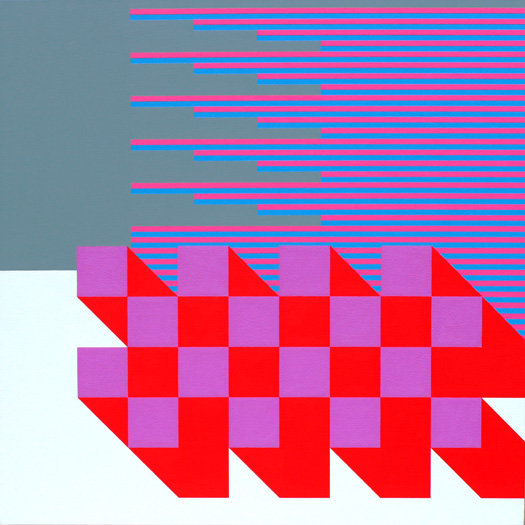
The Lake A Lilac Cube. May 2014. Acrylic on canvas. 40 x 40 inches (102 x 102 cm).
You, Me, and the Interface, which I made in April, is painting that hasn’t yet made my portfolio. I’m still thinking things over. This ultimately was an experimental work that features a flourish of garish colors. Quite simply, I had an idea for a composition and simply ran with it. Whether I took the idea too far is still unclear!
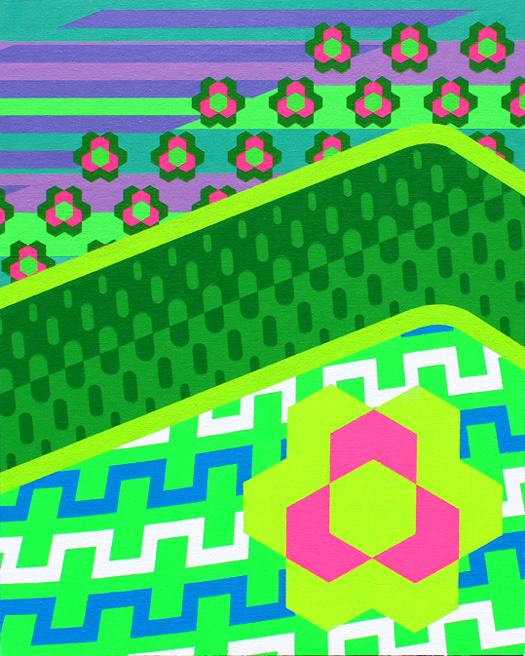
You, Me, and the Interface. May 2014. Acrylic on canvas. 20 x 16 inches (51 x 41 cm).
Invisible Star Redux: Made for my nephew, Invisible Star 2 is a remix/reworking of a 2009 painting. So that I wouldn’t be painting the same work twice, this time around I updated the colorway. The background is light blue, rather than white. The burgundy has a deeper purple tint. The new composition’s orange is much more vibrant, with fluorescent orange added into the mix.
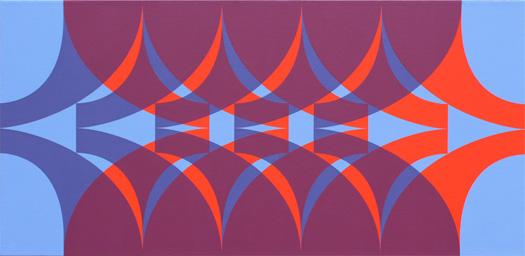
Invisible Star 2. April 2014. Acrylic on canvas. 21.25 x 44 inches (54 x 112 cm).
Two Minimal Studies: I also painted a pair of smaller minimal studies over the course of one weekend in April. I am quite fond of the graphic motif shared by these pieces. Here, I was simply exploring my options.
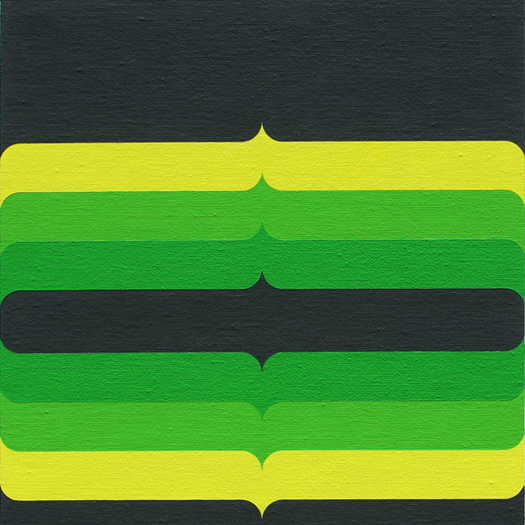
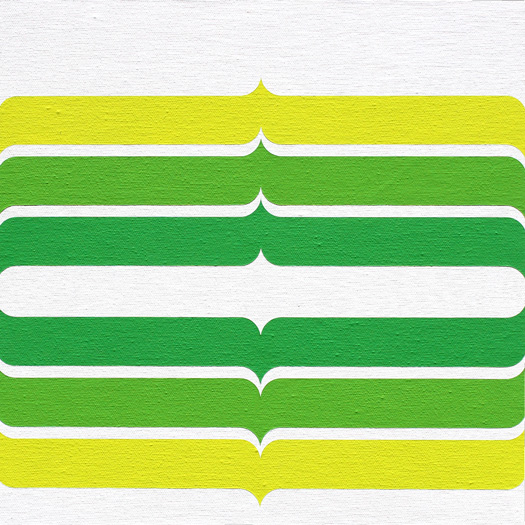
Untitled Studies: April 2014. Acrylic on panel-mounted canvas. 12 x 12 inches (30 x 30 cm).
Well, here’s to summer! I’m looking forward to having a prolific few months ahead. And if you subscribe to my blog by email, you’ll be among the first to learn about what I paint next! Until then, I hope you enjoy your summer.